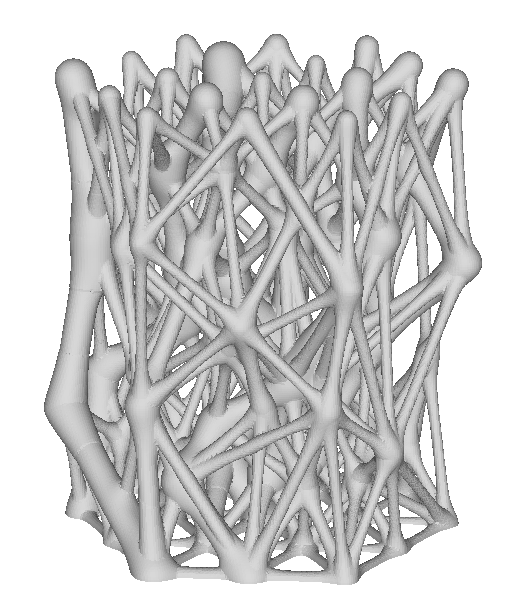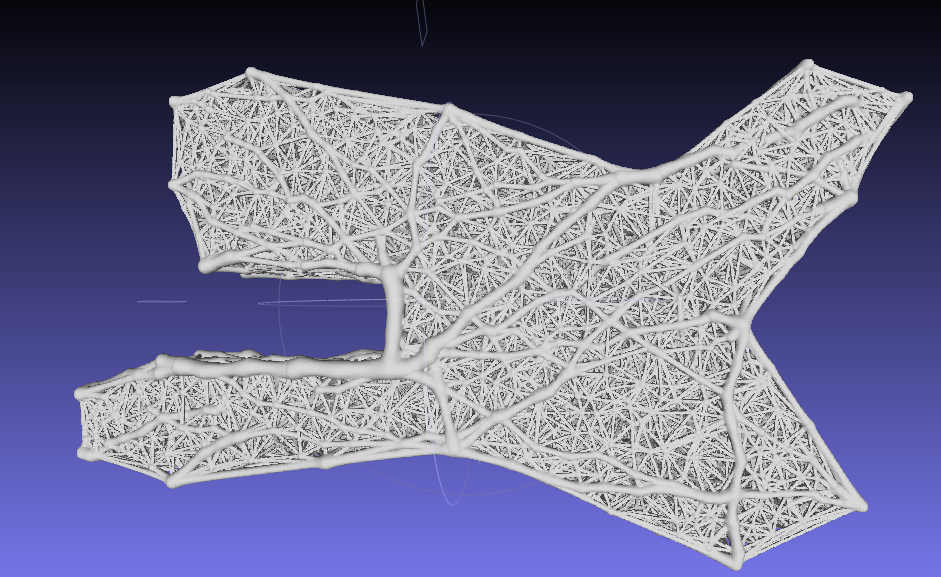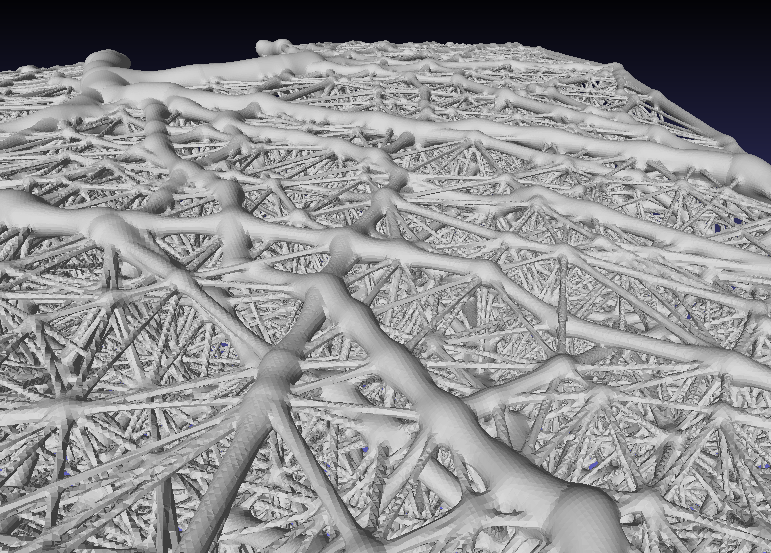3D-print of a guitar
Producing a complex topology
My friend Stan Borkowski just got a 3D-printer for the Amiqual4home project, and is open to suggestions
for fun/interesting/original things to print.
Modeling structures that have a complex topolgy is not so obvious:
doing it by hand requires too much work, fractals are too regular (Menger sponge) and random volumes look too random.
Therefore I made an algorithm that:
- generates a set of random points with some distribution that is relatively easy to control
- computes the Voronoi diagram of the points, producing segments linking nearby points
- defines a density function that is higher near a segment. This function is added
for all the segments, defining a density field
- the isosurface of the density field is explored with a marching cubes algorihtm.
Printing it
Stan pointed out that the slope of overhanging triangles should not be flatter than 30 degrees, otherwise
the print thread would not have enough support from the previous layer. So I removed all links that are less than 40
degrees flat to leave some margin.
The result was printed out:

The guitar idea
Then Jérome Maisonnasse suggested that we could make a guitar from this 3D texture.
The shape of electric guitars is not constrained by acoustic considerations, because the sound is
generated electronically from the vibrations of the strings. The shape of the guitar's body
is there only to offer a grip to the player and for design.
Jérome provided the outline of a typical guitar and its dimensions.
To add a nice effect and maybe increase the strength of the structure, repeat:
- draw a random pair of external points
- compute the shortest path between the points
- increase the weight of segments followed on the paths
The result looks like



Unfortunately, it turned out that printing this thing in steel would we way too expensive, so we left
the project aside.
May 2013.




